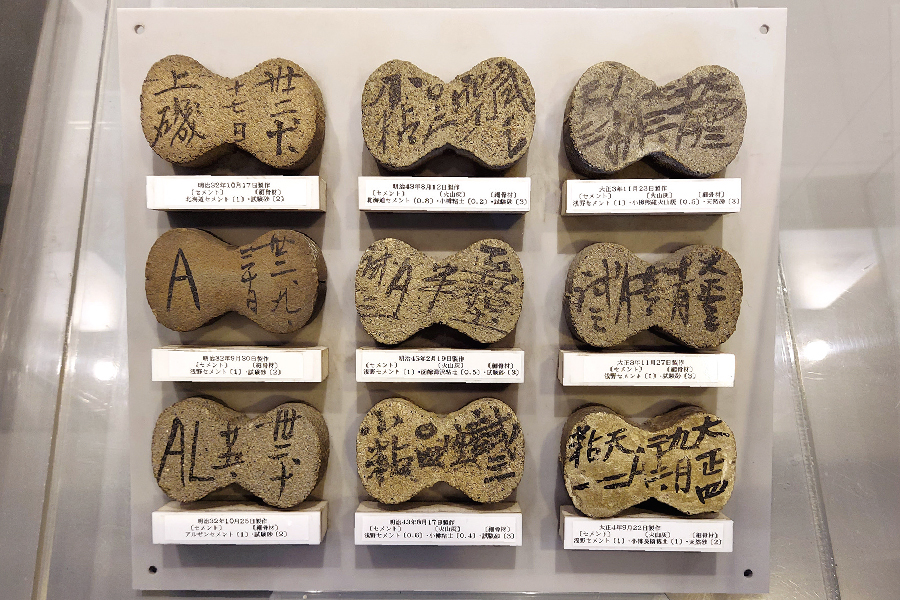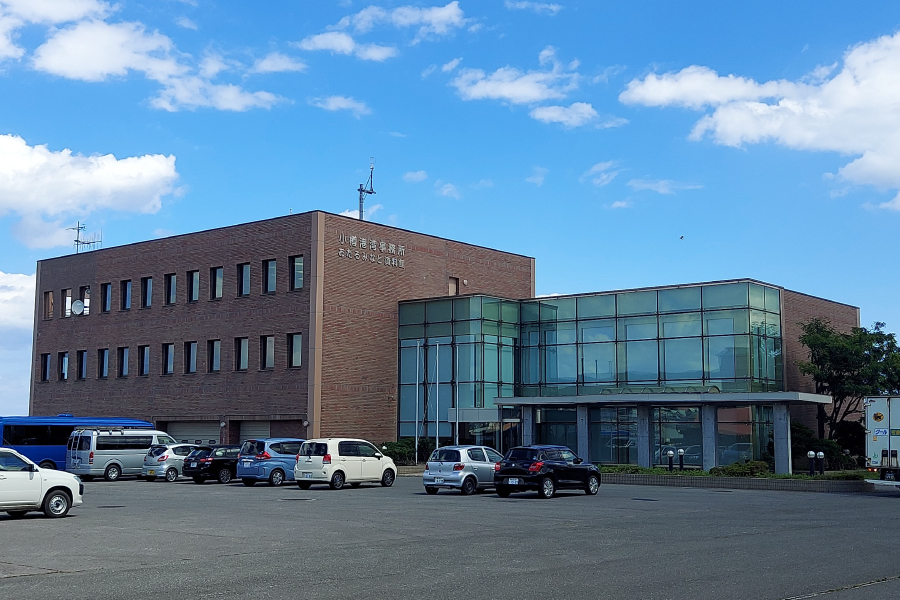
Test Piece for Tensile Strength Testing

Otaru Port Museum
Models, materials, and photographs related to the construction of the North Breakwater and subsequent breakwater projects in Ishikari Bay are on display at the Otaru Port Museum. The museum is located in the Otaru Port Office, which was established in 1897 as the site office for the construction of the Otaru Port North Breakwater. Construction began on the breakwater in 1897 under the direction of civil engineer Hiroi Isami (1862-1928), using the latest machinery from overseas and new materials and techniques developed by Hiroi.
Hiroi devised a wave power formula to calculate the optimum height and angle of the breakwater as well as a range of interlocking concrete blocks to suit the wave conditions and the shape of the seabed. His calculations and designs optimized the performance of the breakwater while reducing material costs. Scale cross-sectional models of the breakwater and the concrete blocks, which each weighed between 14 and 24 tons, help visitors visualize Hiroi’s design.
Photographs of the British-made steam-powered stacking machine that was used to place the concrete blocks in the sea show the scale of the construction project. The machine, called Titan, had a lifting capacity of 24 tons and moved on rails that were laid along the breakwater as construction progressed. With a crew of nine (including two divers to check the alignment of the blocks underwater), the Titan could install about 16 blocks per day.